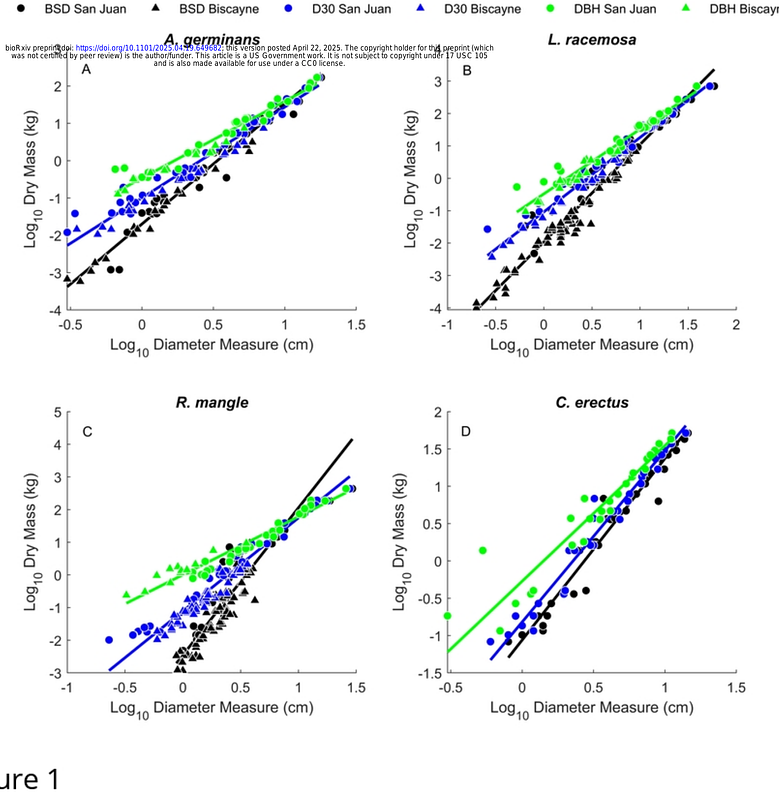Evaluating tree biomass estimation in trans-Atlantic mangrove species: comparing bole diameter measurements for improved accuracy

Evaluating tree biomass estimation in trans-Atlantic mangrove species: comparing bole diameter measurements for improved accuracy
Price, C.; Schroeder, T. A.; Branoff, B.; Marcano-Vega, H.; Pillot-Torres, N.; Chaudry, M.; Ross, M.; Papes, M.; Van Bloem, S.
AbstractEstimating the biomass of terrestrial forests generally, and mangrove forests in particular, is an area of considerable interest. Most approaches rely on empirically derived allometric models to predict tree biomass. The single parameter with the strongest predictive ability in most studies is diameter at breast height (DBH), however the use of DBH arose primarily out of convenience, not from an analysis of tree form. While DBH explains a lot of variability in other tree metrics such as height or above ground biomass, its utility in smaller species is uncertain. Here we used measurements from 302 destructively sampled mangrove trees of four species to test which of three bole diameter measurements, basal stem diameter (BSD), diameter at 30 cm (D30), and DBH, is the best predictor of above ground biomass. D30 had the highest mean coefficient of determination (R2) and lowest mean root mean squared error (RMSE) across all site/species combinations. However, the improvement over DBH was modest, with a mean across all site/species combinations of 1.58 kg RMSE and R2 of 0.948 for D30, compared to 1.63 kg RMSE and R2 of 0.917 for DBH. Nevertheless, D30 may have utility in future studies as it allows for lower size thresholds and has better overall explanatory power than DBH.